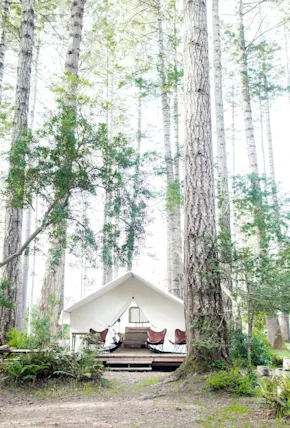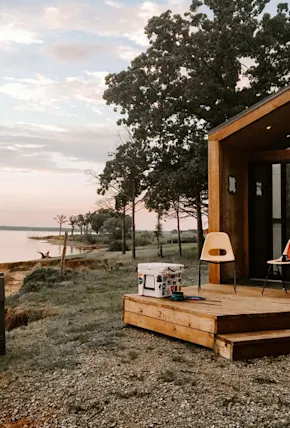You may not typically think about staying in a yurt when planning a camping trip, but we’re here to say, maybe you should. Somewhere between a tent and a prefab cabin, yurts are built using ancient techniques with modern materials to withstand extreme climates and offer dependable shelter in the great outdoors. Yurts are portable, and spacious, and may just be the unsung hero of outdoor accommodations. So, the question isn’t “Why stay in a yurt?” but, “Why not?”
Below, we dive further into the history of the yurt, how they're constructed, and which manufacturers make the best yurts for DIY builders—all to help you get started on your own yurt adventure. Dig in and enjoy.
What is a yurt?
A yurt is an ancient version of the modern tent. Historically, they were used by nomadic tribes and herders across Central Asia, designed to easily dismantle when a community needed to move from one place to another. Yurts are one of the oldest forms of shelter used by ancient civilizations that are still relevant today-with some deviations.
A traditional yurt is a circular structure that is assembled much like a glamping tent. They are sturdy shelters that work well in extreme weather conditions. These structures are usually constructed from all-natural material, and thus their construction has a small carbon footprint. The circular shape of a yurt also gives you the most internal space in relation to the number of building materials used to construct it. Like an A-frame house, yurts are extremely efficient by design.
Although they are traditionally shelters, people also creatively convert yurt into modern offices, restaurants, and glamping sites. Yurts are becoming increasingly popular as tiny homes for many who are drawn to yurt living. Some national parks or campsites offer yurt rentals for those who want to try out yurt camping. They bring inhabitants closer to the earth and are often used by retreat centers and as part of spiritual practices like sweat lodges.












